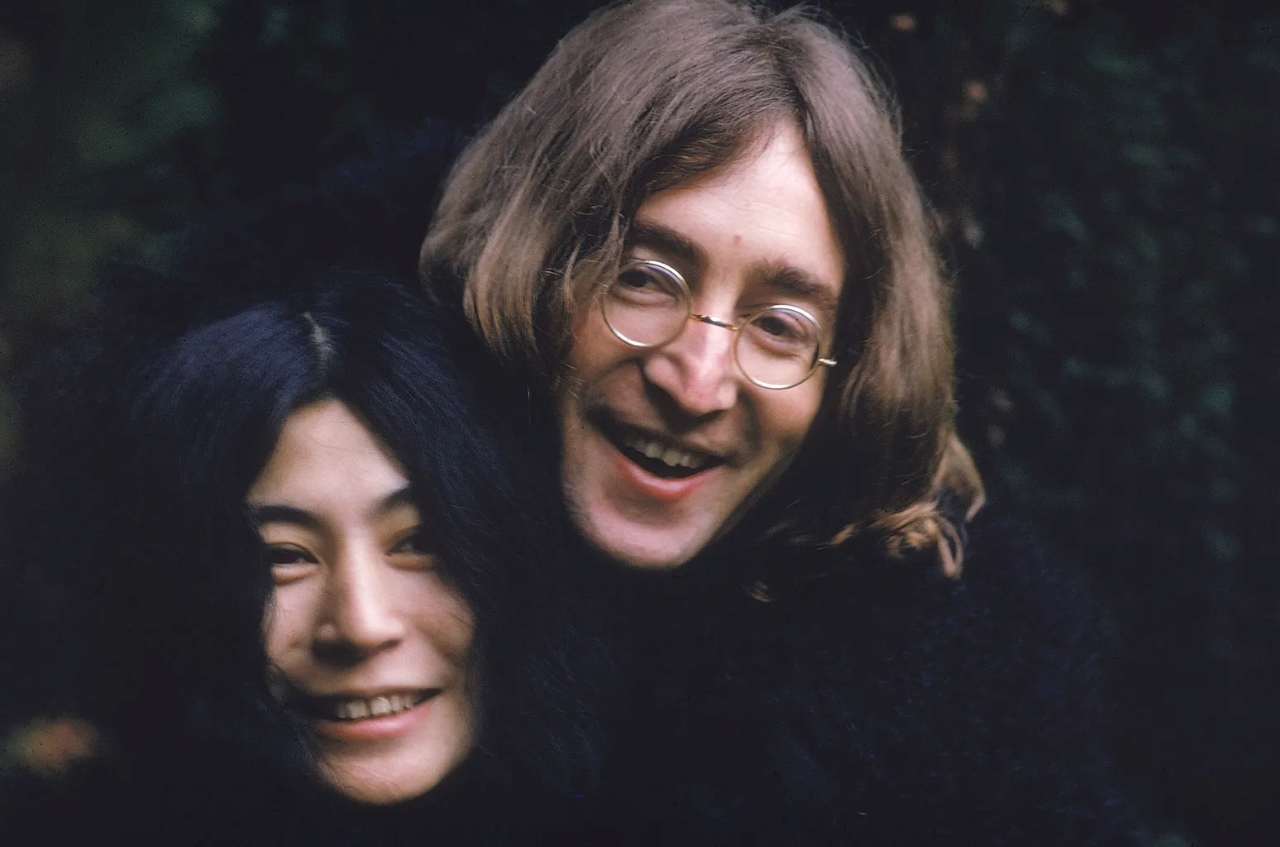🌟 New York, A New Beginning
When John Lennon and Yoko Ono moved to New York City in 1971, it wasn’t just an escape from the shadow of The Beatles. It was a chance for rebirth. The couple quickly became immersed in the city’s counterculture scene, befriending radicals, artists, and activists. Lennon’s Greenwich Village apartment became a hub for ideas that merged art, music, and politics.
By 1972, John was no longer the mop-topped Beatle singing love songs. He was now a radical artist in denim jackets and round glasses, speaking out against the Vietnam War, supporting women’s rights, and joining protests for Native American activists. His music had changed too — raw, politically charged, and unafraid of confrontation.
In this turbulent moment, he and Yoko Ono decided to organize a benefit concert that would embody their vision of using music not just for entertainment, but as a tool for change.

❤️ The Cause: “One to One”
The concert was conceived as a fundraiser for the Willowbrook State School, a Staten Island institution for children with intellectual disabilities. The school had gained notoriety after journalist Geraldo Rivera exposed the shocking neglect and abuse taking place there. The broadcast outraged the public — and Lennon, who had always believed in giving a voice to the voiceless.
The title, “One to One,” came from the idea that each individual could make a difference. Lennon explained:
“We can’t solve the whole world’s problems, but we can work one to one, one person helping another.”
It wasn’t about global revolutions or abstract politics this time. It was about compassion at the most basic level.
🎤 The Stage at Madison Square Garden
On August 30, 1972, Madison Square Garden filled with more than 20,000 fans for two shows — one in the afternoon, one in the evening. The lineup reflected Lennon and Ono’s eclectic and boundary-breaking vision:
-
Stevie Wonder, fresh off his groundbreaking albums that were reshaping soul and R&B.
-
Roberta Flack, whose voice carried elegance and power.
-
Sha Na Na, doo-wop revivalists who added a playful edge.
-
And of course, John Lennon and Yoko Ono, with the band Elephant’s Memory — a gritty New York outfit that gave Lennon’s live sound a raw, garage-rock punch.
The atmosphere was electric. For many fans, this was their first chance to see John perform live since The Beatles had stopped touring in 1966.
🔥 Lennon’s Setlist: A New Rock Voice
When Lennon walked onto the stage, guitar slung low, the roar was deafening. This wasn’t The Beatles’ polished pop; it was stripped-down, aggressive rock with a political edge.
His setlist included:
-
“Power to the People” – an anthem of activism.
-
“Instant Karma!” – urging people to act now for change.
-
“Come Together” – a nod to his Beatles past, but reinvented with grit.
-
“Mother” – a gut-wrenching scream of childhood trauma and loss.
-
“Imagine” – the hopeful ballad that had already become a global hymn.
Between songs, Lennon joked nervously, aware of the pressure. At one point, he famously introduced himself:
“Welcome to Madison Square Garden, in the middle of New York City, in the middle of the world — and here we are, in the middle of the show.”
It was both self-aware and disarming — classic Lennon.
🎶 The Moment with Stevie Wonder
One of the highlights of the night was when Stevie Wonder joined Lennon on stage. The two launched into a raucous version of “Yer Blues”, originally from The Beatles’ White Album.
The sight of Lennon, the British rock icon, and Wonder, the American soul genius, jamming together symbolized the unity the concert was about. It wasn’t perfect musically — rough, loud, chaotic — but it was alive. It felt like history in the making.
🌹 Yoko Ono’s Presence
Yoko Ono’s set divided the audience, as it often did. Her experimental vocal performances — primal screams and avant-garde expression — shocked many rock fans expecting Beatles melodies. Yet John stood by her side unwaveringly, sharing the stage, amplifying her art, and forcing the audience to confront something outside of their comfort zone.
This too was part of the message: unity, acceptance, and breaking barriers.
📀 From Concert to Legacy
Though the concert was a success in raising both money and awareness, its legacy grew even larger after Lennon’s death in 1980. In 1986, Yoko Ono oversaw the release of the recordings as the album and video “Live in New York City.”
Listening today, the performances are raw, sometimes messy, but undeniably powerful. They reveal Lennon as he was in 1972: passionate, imperfect, yet fully alive.
Critics have since recognized the show as a landmark — not because it was flawless, but because it was fearless. Lennon was no longer chasing pop stardom; he was using music as activism, as honesty, as connection.
🌍 Why It Matters Today
The “One to One” concert represents a turning point in the idea of what rock musicians could be. They weren’t just entertainers; they could be advocates, activists, and humanitarians. Lennon himself put it best:
“Music is everybody’s possession. It’s only publishers who think that people own it.”
Through this concert, he proved that music could belong not just to fans or record labels, but to causes, communities, and those most in need.
🎵 One Song to Revisit: “Instant Karma!”
If there’s one track that captures the spirit of the “One to One” concert, it’s “Instant Karma!” The pounding piano, the urgency in Lennon’s voice, and the rallying cry of “We all shine on” made it an anthem of immediate action.
It wasn’t about waiting for change — it was about making it happen right now, one to one.